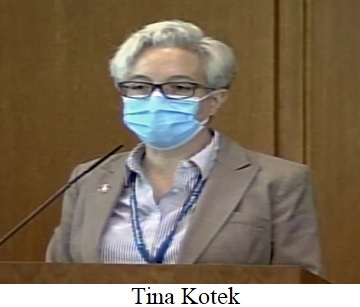Eliminating barriers such as sobriety standards
There are homeless and then there are unsheltered. In 2020, Oregon
reported a total of 14,655 homeless, a decline of about 1200 from 2019. Out of the total, there are 4,123 whom are chronically homeless individuals, and 35-40 percent of homeless suffer from some form of mental illness. While national homeless numbers increased by 2%, Oregon saw an 8% decrease. Since 2020, Oregon has taken significant steps to further help the homeless.
The Oregon Housing and Community Services (OHCS) established goals in 2019 for ending homelessness that includes encouraging low-barrier, safe and housing-focused shelters. A “low-barrier†center operates 24/7, and provides intensive case management to connect people to public benefits, health services, and permanent housing, through a Housing First philosophy. Shelters ensure immediate access by lowering or eliminating barriers such as sobriety standards, pet restrictions, restrictions based on identification, income, background checks, and requirements for participation in programs. Storage is required for weapons and drugs, however, they can be retrieved upon exiting the shelter. When they show up, the doors are open providing a safe, warm place for those who may not have other options.
In 2021 session, Speaker Kotek passed
HB 2004, which appropriates $7 million in General Fund to OHCS, and $2 million for technical assistance for low-barrier emergency shelters or transitional housing to accommodate the unhoused from wildfires. Moneys went to establish navigation centers in the following jurisdictions: $1.5 million to the City of McMinnville; $1.5 million to the City of Roseburg, $2.5 million to the City of Bend; $2.5 million to the City of Medford; $5 million to the City of Salem; and $5 million to Lane County for a navigation center in the City of Eugene. Navigation centers are defined as low-barrier emergency shelters open seven days per week with the purpose of connecting homeless individuals and families with health services, permanent housing, and public benefits.
Many cities have also received funding from the federal COVID-19 relief funds received last year. It has provided startup and maybe the first-year operations, but various options for long-term funding is still on the table.
Salem opened Tanner House as their first low-barrier veterans housing project. Tanner House offers mental health support, peer support, and drug and alcohol case management. A front office accommodates veterans that walk in off the street that need linked to services.
The City of Bend converted their winter shelter into a year-round low-barrier homeless shelter. As with most cities, a nonprofit runs the 70-bed shelter. The nonprofit, Shepherd’s House Ministries, also provides case management and supportive services. The Council’s goal is to expand to 500 beds in a three-year action plan. There are nearly 1,000 homeless in Central Oregon reported in 2020.
A D V E R T I S E M E N T

A D V E R T I S E M E N T

Outside of Portland, Eugene may have the next biggest issue with homeless camps. When City of Eugene Mayor Lucy Vinis was asked about street camps, she told Northwest Observer, “The folks who are disaffected from society and unwilling to change their transient lifestyle are much harder to persuade to move into any kind of shelter or managed site – and I don’t imagine hotels are any better for them than any number of other options, but I could be wrong. They really present our biggest problem.â€
Mayor Vinis describes the type of homeless that low-barrier shelters are meant to accommodate. The chronically homeless with physical and mental needs that are not likely to ever be transitioned back into society or a productive life style. They are not suited for micro-shelters or villages. The question is, will low-barrier centers provide a safe shelter and encourage treatment, or will it be a protected drug haven?
--Donna Bleiler| Post Date: 2021-10-31 09:36:55 | Last Update: 2021-10-30 15:09:57 |








 Outside of Portland, Eugene may have the next biggest issue with homeless camps. When City of Eugene Mayor Lucy Vinis was asked about street camps, she told Northwest Observer, “The folks who are disaffected from society and unwilling to change their transient lifestyle are much harder to persuade to move into any kind of shelter or managed site – and I don’t imagine hotels are any better for them than any number of other options, but I could be wrong. They really present our biggest problem.â€
Outside of Portland, Eugene may have the next biggest issue with homeless camps. When City of Eugene Mayor Lucy Vinis was asked about street camps, she told Northwest Observer, “The folks who are disaffected from society and unwilling to change their transient lifestyle are much harder to persuade to move into any kind of shelter or managed site – and I don’t imagine hotels are any better for them than any number of other options, but I could be wrong. They really present our biggest problem.â€